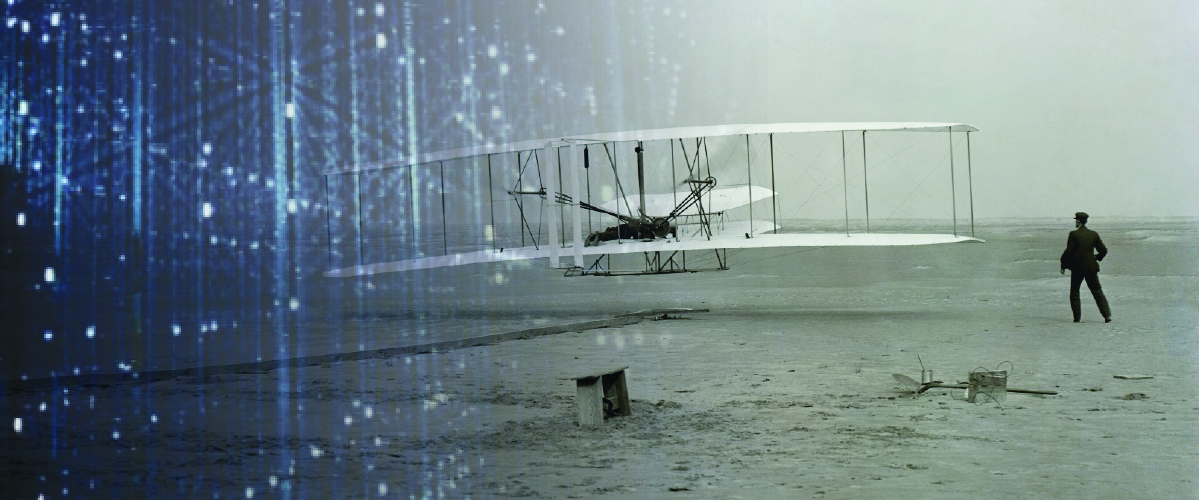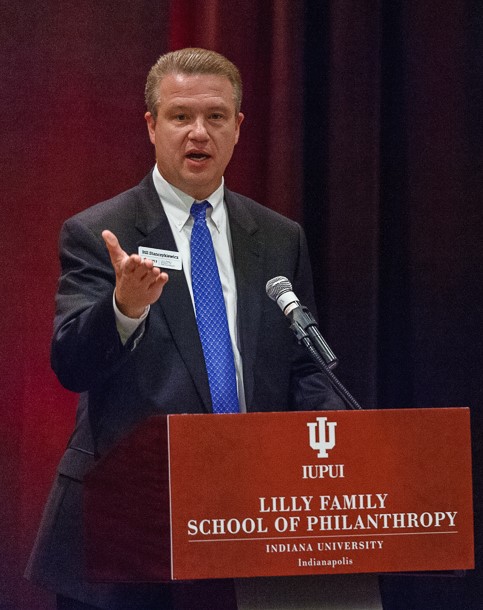Digital Fundraising

By Bill Stanczykiewicz, Ed.D., Assistant Dean for External Relations at Indiana University Lilly Family School of Philanthropy
Beloved events and activities are returning across Indiana as the worst of the COVID-19 pandemic appears to be waning in the United States. The Indianapolis 500 welcomed more than 100,000 fans in the stands during Memorial Day weekend, and the summer months will include a return of the Elkhart County Fair as well as the Madison Regatta.
This gradual return to normal – or at least a “new normal” – also raises questions for fundraising. After more than a year of online special events and donor meetings via Zoom, how much fundraising now will be conducted in-person compared with online? An example from history, with ties to Indiana, can help answer that question.
The Wright brothers, with family roots in Henry and Wayne counties, achieved motorized flight in 1903. The earth existed for millions of years before Wilbur and Orville figured out how to get that first airplane to fly.
Less than 60 years later (in 1961), the Soviet Union and the United States each put a person into space, and before the end of the 1960s Purdue alum Neil Armstrong was walking on the moon. Just three decades after the first moonwalk, people started living on the International Space Station. Only 20 additional years transpired until humans flew an aircraft over another planet – the Ingenuity helicopter over Mars, which a NASA official aptly referred to as a “Wright brothers moment.”
Millions of years until the Wright brothers. Just 118 more years to fly a helicopter over Mars.
While many years can transpire before the first digital breakthrough occurs, the next iterations of technological development happen quickly. Along the way, technology never goes backwards. The transformation of pagers into flip phones into smart phones connected to “the cloud” happened relatively rapidly, and no one is clamoring for a return to a land line telephone bolted to the kitchen wall.
These examples are instructive as fundraisers prepare for life after the pandemic. At least two backpacks are needed for the journey.
The first is mindset. Digital fundraising accelerated significantly during the pandemic, and that acceleration is here to stay. Gone are the days when fundraisers could make comments such as, “I just don’t know digital fundraising,” or, “I’m not on social media,” or, “All of my donors only want to meet with me in person.”
The ability to meet via Zoom now is expected. The availability of a fundraising event online now is expected. Face-to-face fundraising remains foundational while the definition of “face-to-face” becomes flexible.
Therefore, our mindset needs to expand with the opportunities provided by new digital realities. Just as the Buddhist sage Eihei Dogen wrote the first fundraising letter in 1235, and the craft of annual fund letter writing continued evolving over time, fundraisers need to develop and then grow a digital mindset.
The second backpack for this journey into cyberspace involves fundraising techniques. Having a website, a social media presence, and the ability to accept donations online now are standard. However, how those digital platforms are utilized has changed and will continue to advance.
For example, analyzing how people interact on your nonprofit’s social media platforms can help you assess donor engagement and identify prospective donors – essential activities for annual fund and major gift fundraising. In addition, including short, personalized videos recorded on your smart phone and sent via e-mail or direct message now is a part of mainstream fundraising and stewardship.
Meanwhile, anecdotes abound about the success of online special events. As we teach for The Fund Raising School around the United States and across the world, countless fundraisers tell us how attendance and fundraising during their recent special events were higher than ever before because of the convenience of attending online.
Yes, there are donors clamoring to return to the gala dinner, the fashion show, or the golf event. However, be ready for the donor who says, “I’m going to donate the same amount whether I attend the event or not. So, can you again send me that bottle of wine to enjoy while watching your special event from home, just as you did last year?”
These are just a few examples demonstrating why some nonprofits have created full-time staff positions devoted exclusively to digital fundraising. If your nonprofit does not yet have the capacity for a full-time digital fundraiser, existing staff need to learn and strengthen their online fundraising techniques.
Doing so will allow nonprofits to maintain current fundraising while diversifying their donor databases. For example, a recent study from the Indiana University Lilly Family School of Philanthropy discovered that crowdfunding disproportionately attracts donors of color, millennials, and people who are non-religious.
The digital fundraising mindset as well as digital fundraising techniques are taught in The Fund Raising School’s Certificate in Digital Fund Raising (CDFR). The certificate involves three online courses delivered in a timeframe that is convenient for busy fundraisers. The curriculum covers a range of experience and expertise – from the beginner to intermediate and onward to advanced.
As Hoosiers well know, the Ball Brothers Foundation was established by a family that invented state-of-the-art glass canning jars. The Ball Corporation then evolved to design glass components for the aerospace industry, including the glass lenses that repaired the Hubble Telescope.
The Ball family’s example of invention, continuous improvement, and next-generation creativity is an example fundraisers can follow to fully take advantage of digital fundraising – what we know today, and what will be invented tomorrow.
Bill Stanczykiewicz serves as assistant dean for external relations at the Indiana University Lilly Family School of Philanthropy where he directs The Fund Raising School, an associate member of the Indiana Philanthropy Alliance.

